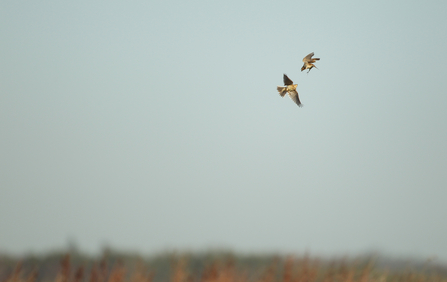Leaving the noise and grime of the main road behind, I followed the gravel path that wound its way up the hill, through The Folly, and then onto Barlow Burn, my eventual destination. There was not a cloud to be seen in the speedwell-coloured sky and after a chilly early start, the sight of the sun overhead was a welcome sign.
The earth is beginning to awaken from its winter slumber; pollen coated pussy willows Salix caprea danced in the light wind and the blackthorn Prunus spinosa was adorned in dazzling clouds of white flowers. At first glance, the meadows on either side of the path looked drab and still asleep but then as I looked closer I realised that they were dotted with clumps of egg yolk yellow flowers. From a distance, they looked very similar but on closer inspection, I could see that there was a mixture of cowslips, Primula veris, with their bell shaped flowers, dangling like a bunch of keys and the open flowers of primroses, Primula vulgaris, with their darker yellow-orange centres. Cowslips and primroses are an important early source of nectar for many hungry insects and as I looked a queen bumblebee inserted its long tongue, which can be as long as 2 cm, into one of the tubular flowers to drink the life-giving nectar.
It was as I walking back from examining the spring flowers that I disturbed a skylark Alauda arvensis, - it rose straight up from the ground, flapping its wings faster and faster to gain height. As it flew higher and higher it began to sing, a song that seemed to fill my heart with pure joy, no wonder the song of the skylark has been celebrated in so many poems and songs throughout the ages.






